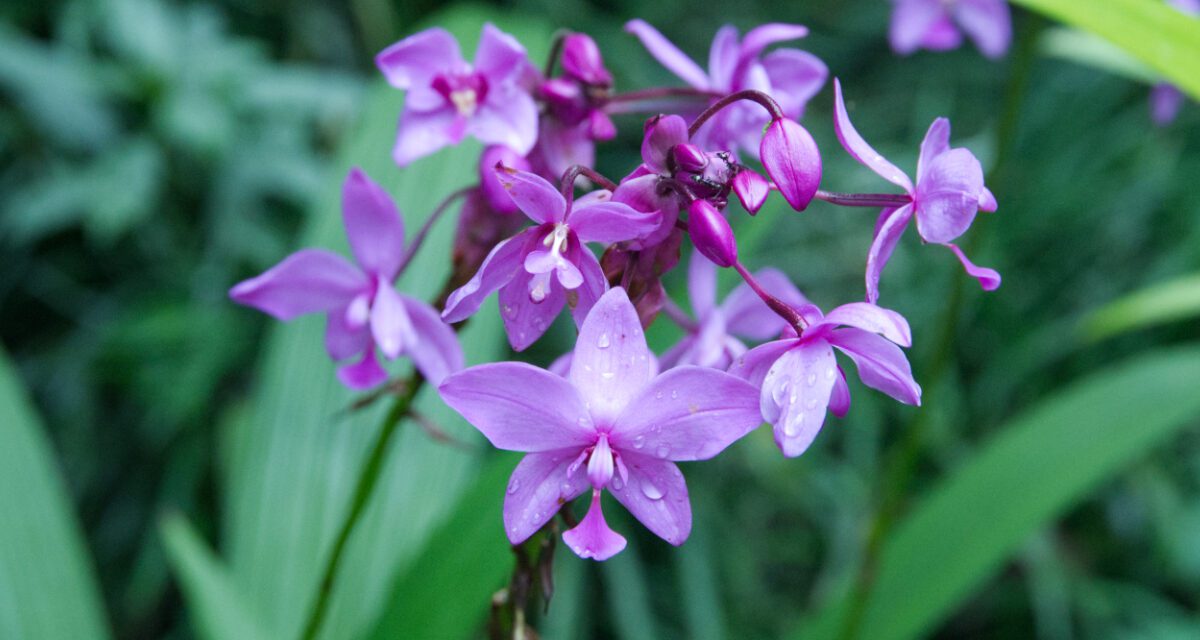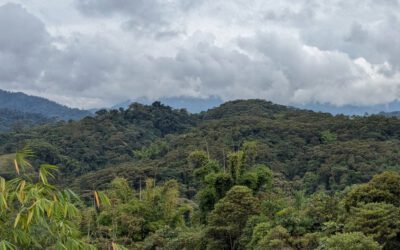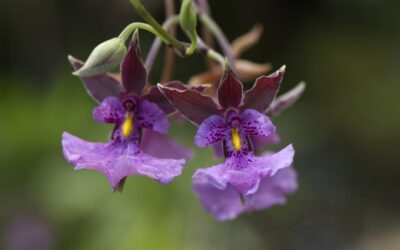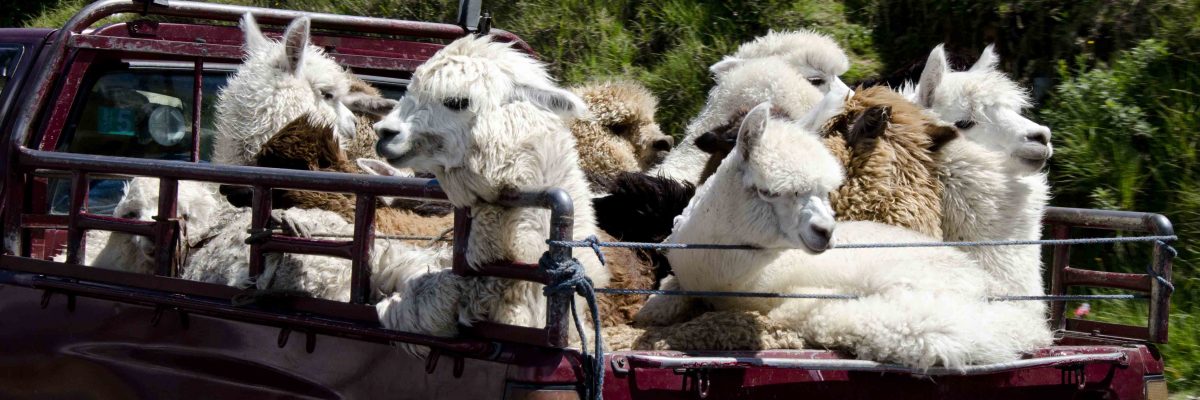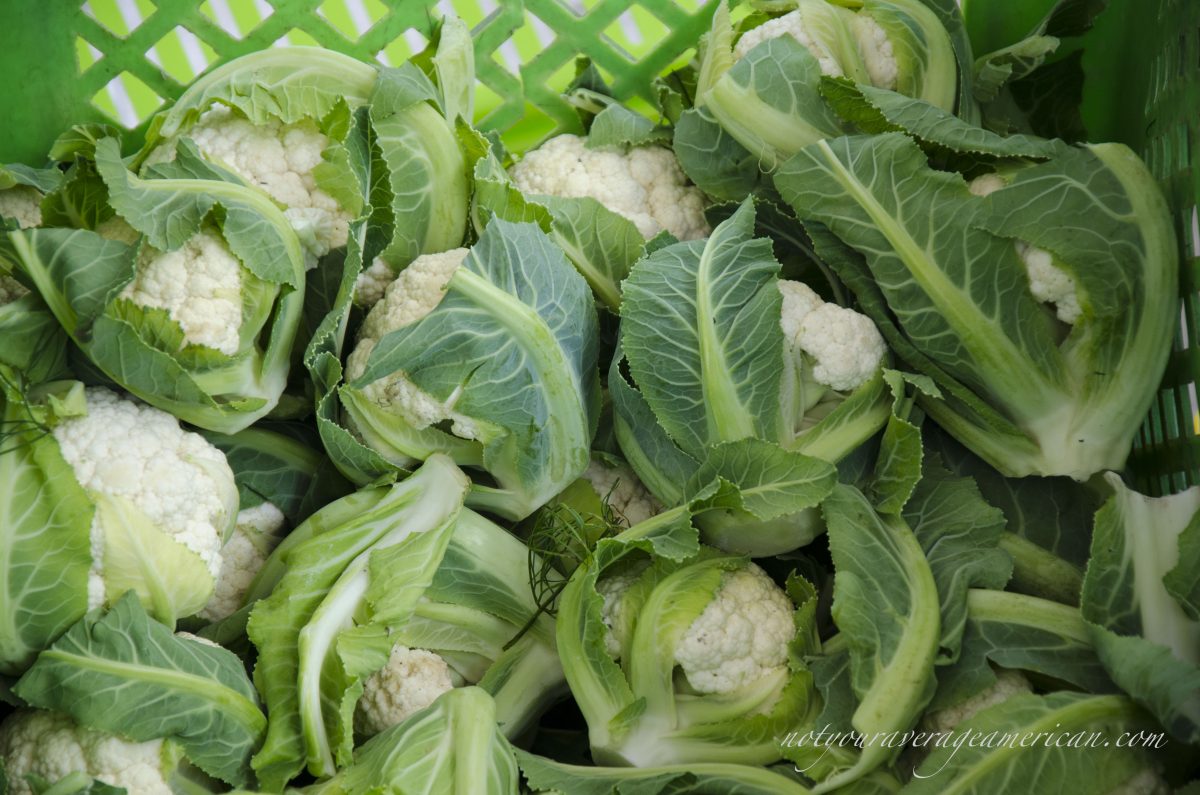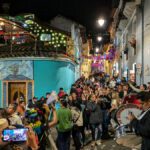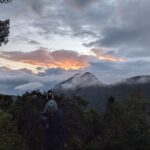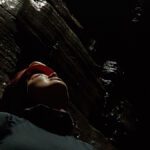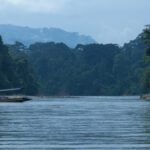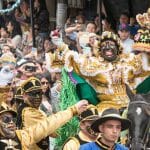Orquiderio, a word boldly painted in white, is the only sign inviting visitors to the EcoSelva Orchid Garden. Thanks to a collaboration with Jiovany Rivadeneyra of Ama EcoLodge, we had no problems finding the place, arriving by motor canoe from the small town of Puerto Misahuallí along the Napo River in Ecuador’s Amazon. It was a visit that will stay with us for a very long time.
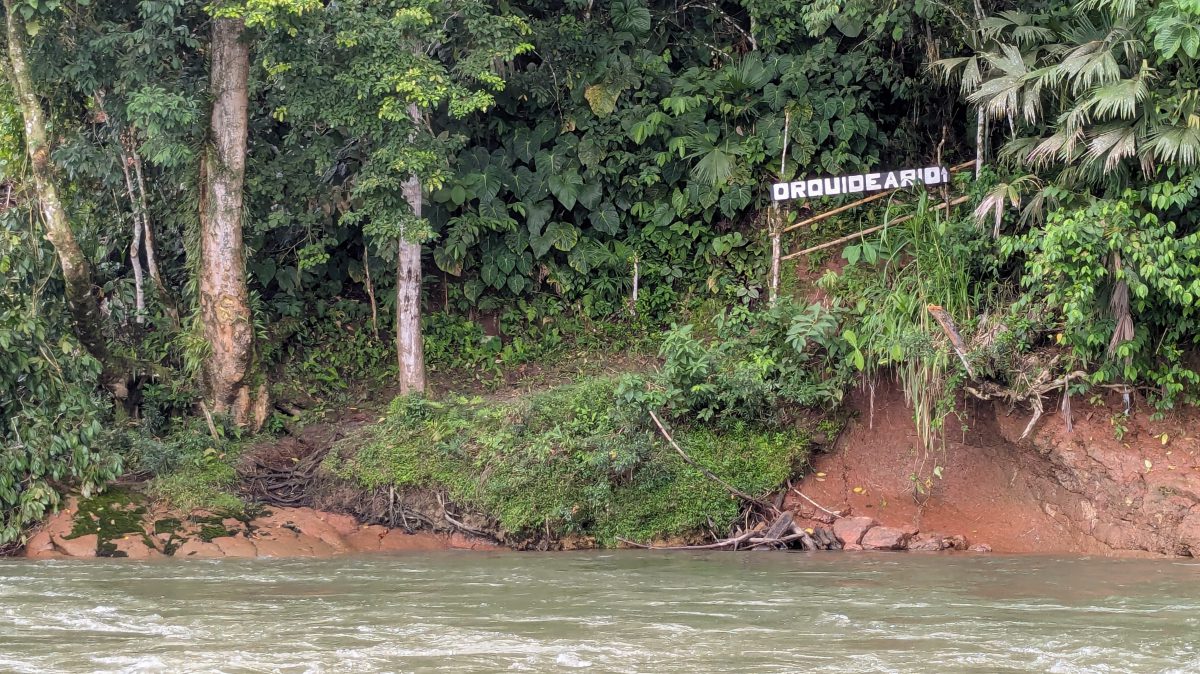
More than a collection of exotic blooms, this sanctuary is a living, breathing testament to founder Pepe Tapia’s commitment to regenerative practices, patience, and deep respect for nature. Scott and I were amazed by his hard work – worthy of any scientist despite his lack of formal training as a botanist.
A Rescue Mission, Not A Collection
“Vamos a ver las flores,” Pepe invited us with a smile to see the flowers. As we walk the trails to hunt for orchids among the trees, I aim my voice recorder at Pepe, afraid to miss anything he has to say. I am in awe of this project. More so because Pepe doesn’t grow orchids; he rescues them.
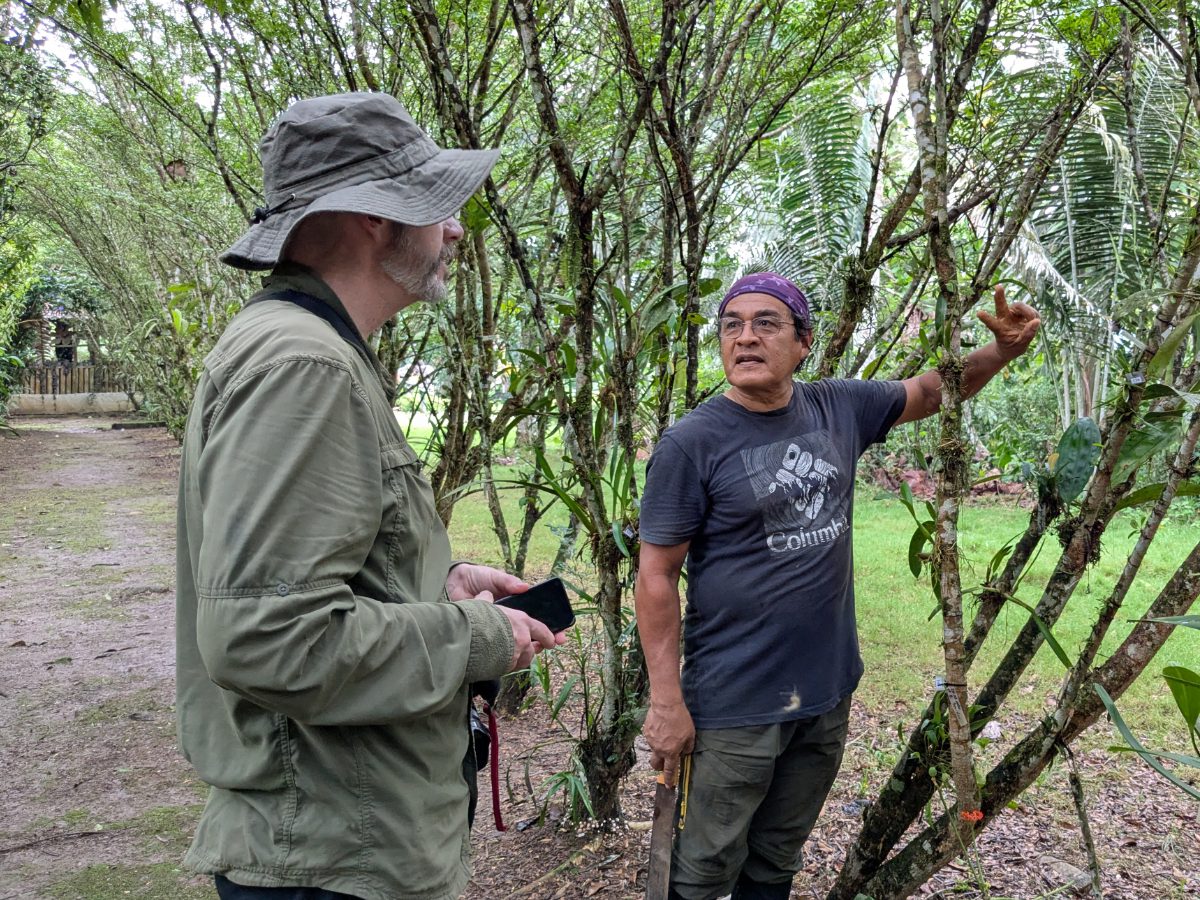
Every one of the 650 species now thriving in the garden came from fallen trees. “Cuando escuchamos una motosierra, vamos,” Pepe says. When chainsaws echo through the forest and a tree falls, the team rushes in. Yes, the Amazon is under threat from every direction, including landowners who cut down valuable hardwood trees for sale, to sow a new crop, or to plant grass for cattle. The jungle is hard to monetize. But Pepe is there, hoping to save orchids, some of which have yet to be named.
First, Pepe photographs each orchid in its natural setting. This documentation ensures compliance with strict environmental regulations and proves they are not illegally harvesting, a common problem throughout Ecuador. Next, the orchids are carefully relocated, tied gently to new host trees where they begin the slow process of re-rooting—“enraizar, enraizar, enraizar,” Pepe repeats, like a mantra.
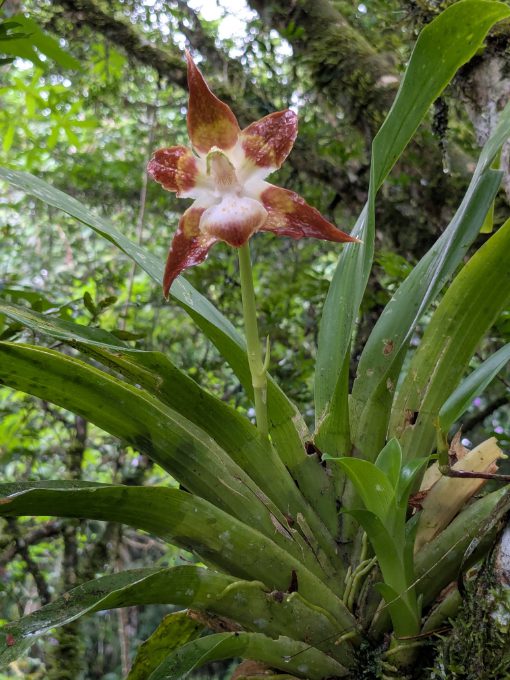
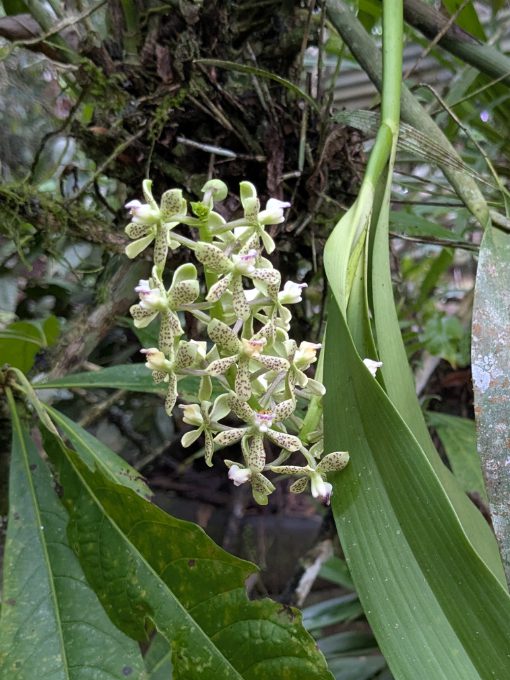
Making Space for Orchids
Eight years ago, this space was dominated by yucca, plantains, and cacao. It looked like your average finca or small farm. To make room for something greater, Pepe cleared the land to prepare for reforestation, restoration, and regeneration.
He started with mother plants, native trees, and shrubs, often collected as tiny seedlings from riverbanks. These pioneer species would become the hosts for their new guests: wild orchids.

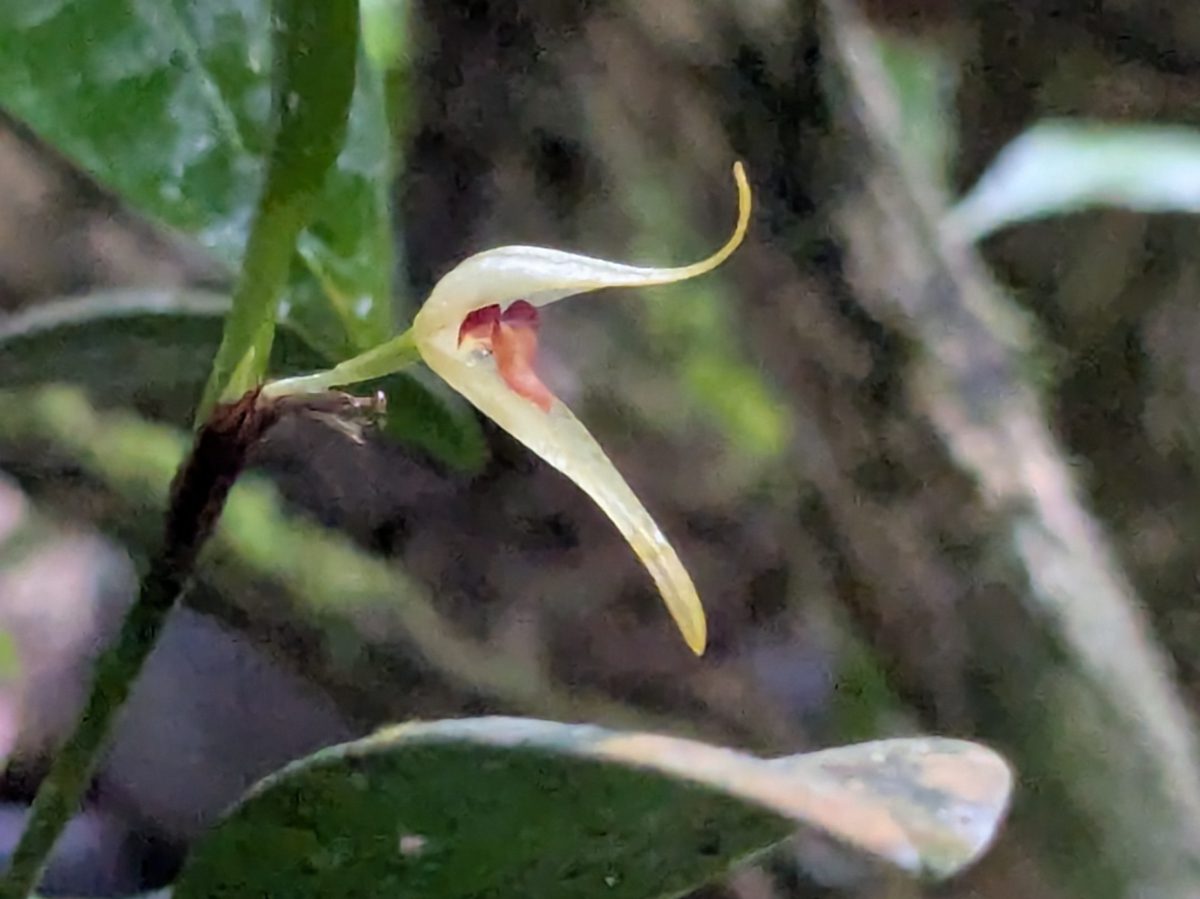
A Maze of Orchids
Today, the garden unfolds like a green labyrinth. This carefully designed maze twists and turns in the shady spaces created by those mother trees planted years ago. The first four years were slow going. Pepe recalls how the trees needed time to mature, stretch limbs, and create a perfect balance of dappled light and filtered shade—conditions crucial for orchid survival.
“Las orquídeas necesitan luz, pero no sol,” he explains. Orchids need light—but not direct sunlight. Too much, and they wither. Too little, and they refuse to bloom. Perhaps you’ve experienced this at home with your supermarket orchid. The trick is to find a place with indirect, bright sunlight, warm days, and cool nights with the occasional spritz of clean water and an additional tablespoon or two among its tightly protected roots. Not much different from orchid conditions in the wild.
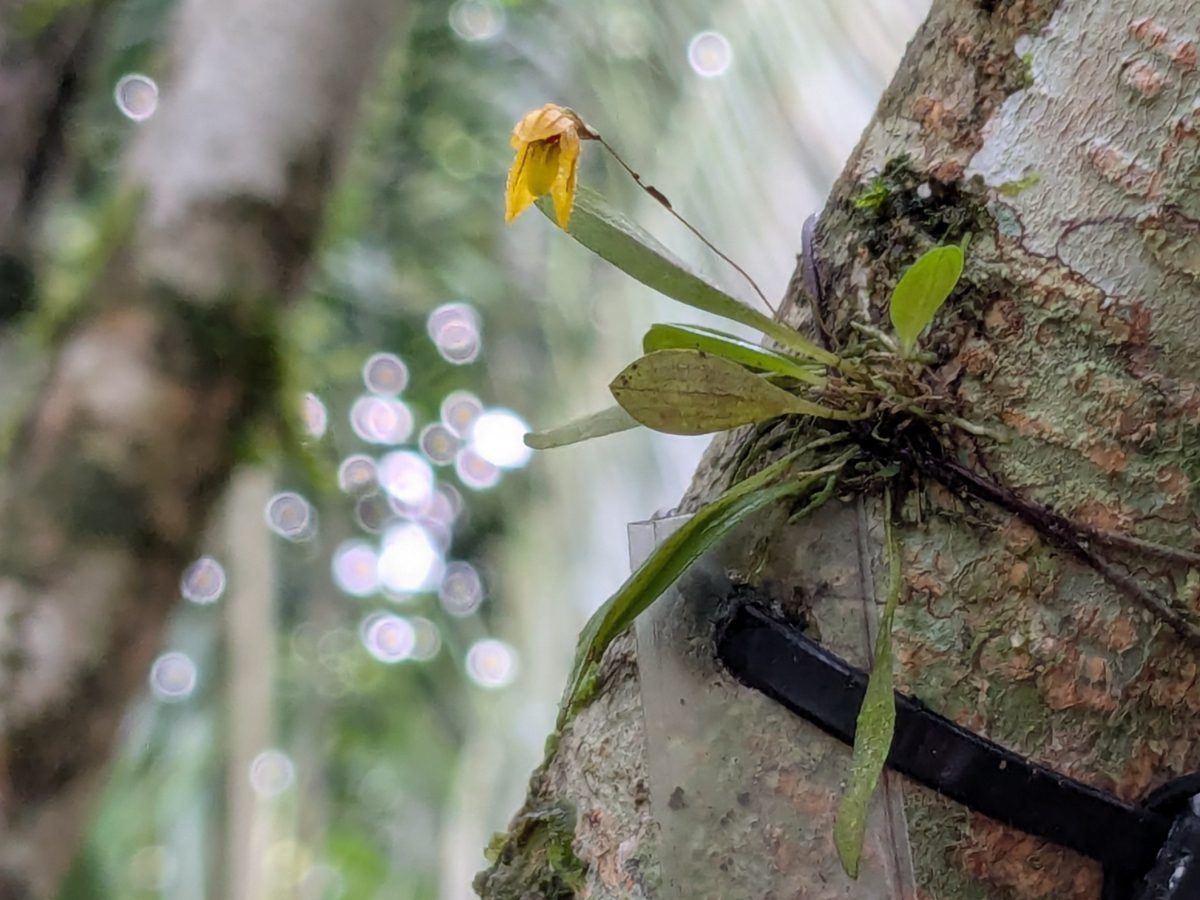
Orchids That Deceive, Then Reward
Pepe talks about orchids with fascinating detail. “Las flores nos engañan.” They trick us, he says. Some orchids don’t offer nectar. Instead, they lure bees with their scent, often tricking them into thinking there’s something sweet. Male bees, drawn in by the aroma, land expecting food. Instead, they unwittingly become pollinators, carrying pollen sacs from flower to flower.
These same flowers attract human noses as well. Jiovany, my husband, and myself couldn’t get enough of the rich, heady aroma of different species. Some reminded us of vanilla, no surprise as it comes from an orchid itself! Others were more complex with floral notes, hints of citrus, and echoes of cinnamon and nutmeg. Inhaling these orchids was rather like tasting a fine wine. It was necessary to stop, consider, and contemplate what we were sensing.
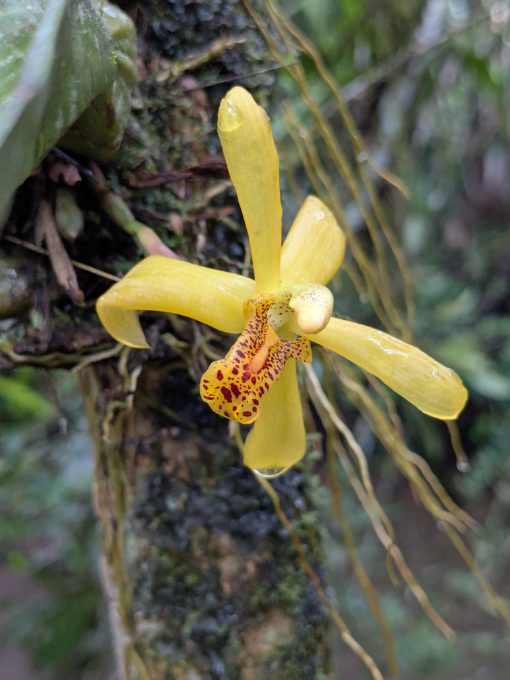
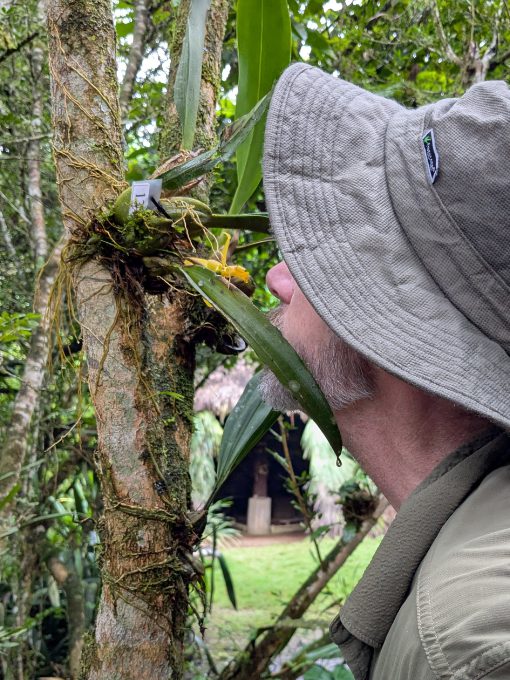
Some orchids bloom only once a year. Others bloom multiple times, for a single day or even a full month. When pollination succeeds, it can take up to eight months for the orchid to produce seeds, which are so fine they’re carried by the wind—like invisible dust sowing future blooms. Even more interesting, orchids of the same species often bloom on the same day, even when they are on another tree or in a different section of the garden.
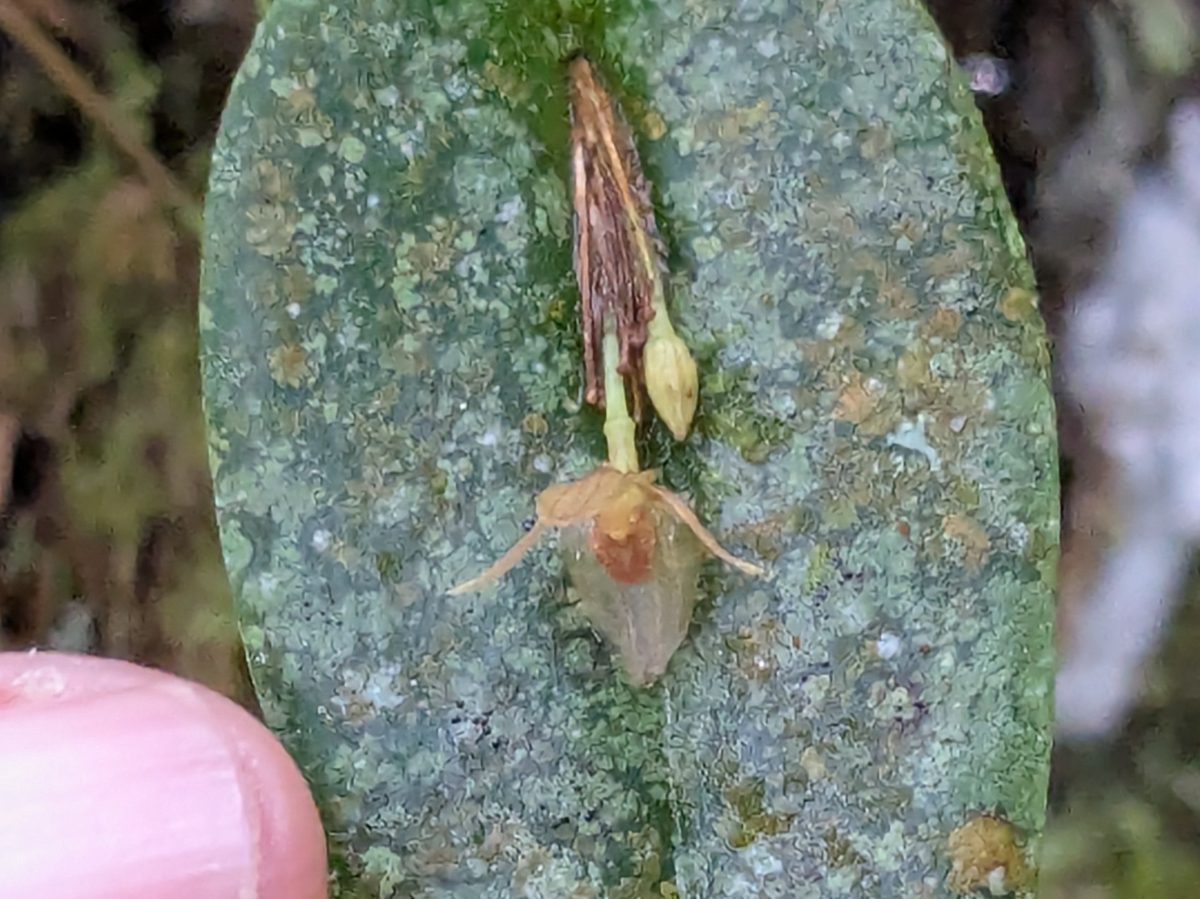
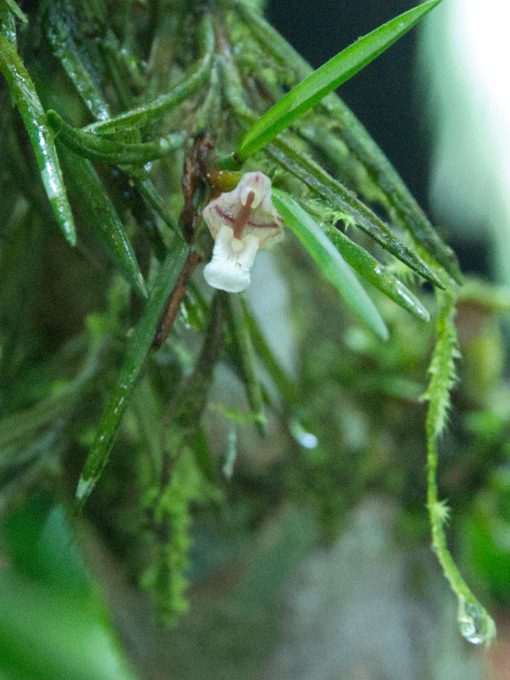

We were fortunate to arrive in early April, the ideal time for orchid bloom throughout Ecuador. Although it’s possible to see orchids any time of the year, the best time is towards the end of the rainy season just when the sun starts to filter through the canopy more often. We’ve had our best luck spotting the most species in April and May. However, we catch some unusual orchids in the off-season so we never say never to an orchid expedition!
A Wall of Miniature Orchids
While I loved all of the tour, my absolute favorite moment was the mini-orchids. Pepe keeps a collection of these miniature wonders hanging in large snail shells from a wire wall in the middle of the garden where they have the perfect combination of shade, sun, and humidity to thrive.
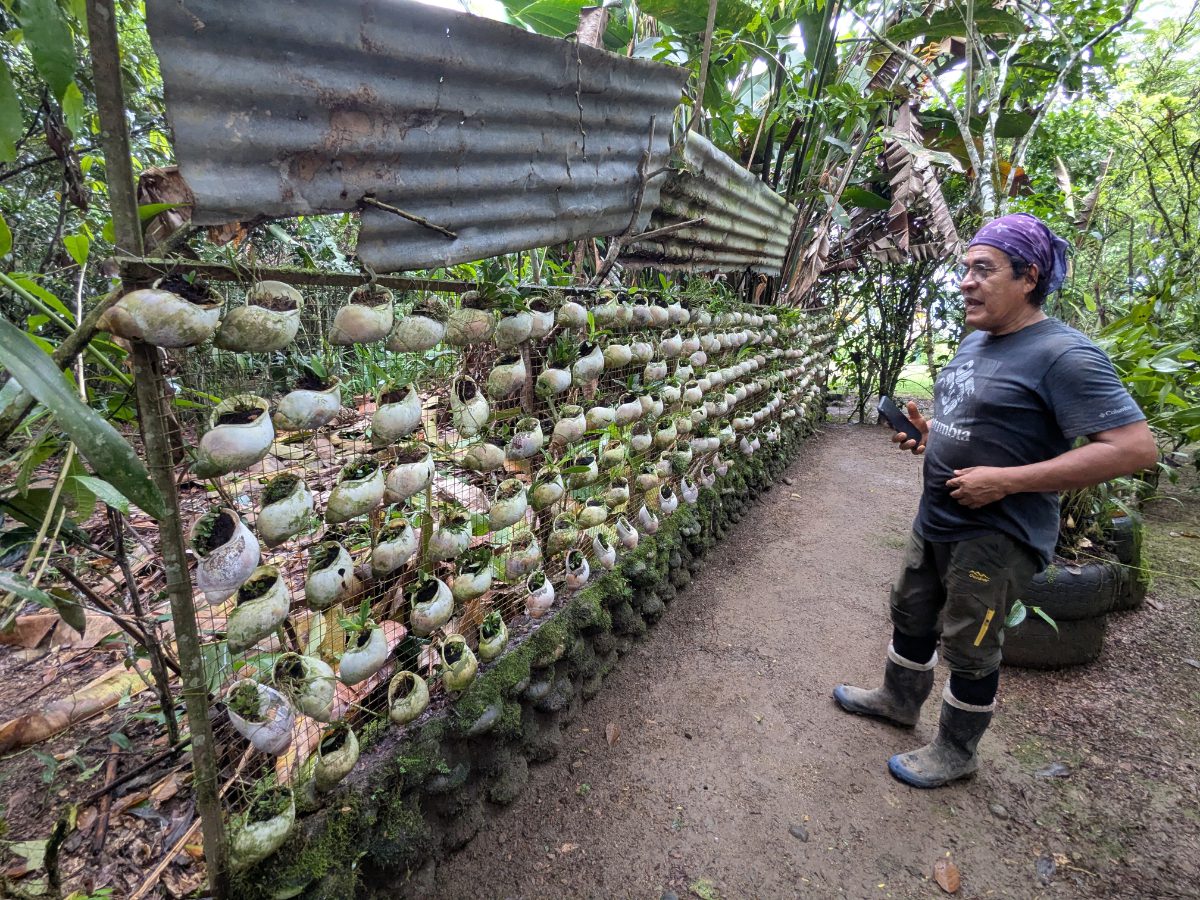
Many of these species are smaller than the nail on my pinky finger. Yet with the help of a good cellphone, we could take a photo and admire the closeup image of tiny lips and anthers, of minuscule hairs bathed in dew. In fact, many of these orchids are easier to admire with the help of a magnifying glass, especially if you wear bifocals like myself. Finding the perfect angle to admire an orchid when wearing glasses can be complicated!
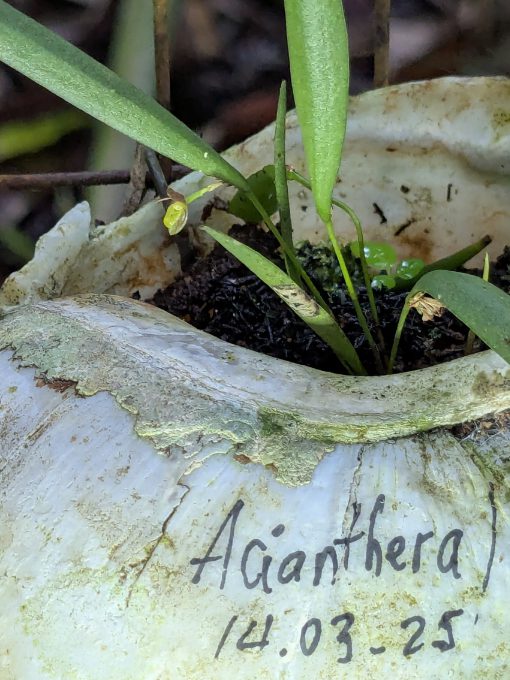


A Living, Breathing Conservation Story
EcoSelva is a model of regenerative tourism—a place where visitors don’t just come to see pretty flowers but to witness a healthy ecosystem working as an integral part of a larger community. It’s a space where traditional knowledge, environmental stewardship, and scientific observation blend in a way so natural it can often be difficult to describe. Perhaps this is why Pepe finds it hard to find local funders for his project. Most of his donations come from international visitors like ourselves. Pepe does not run a traditional research station but his work is worthy of attention from universities looking to invest time, effort, and money into protecting native orchid species.

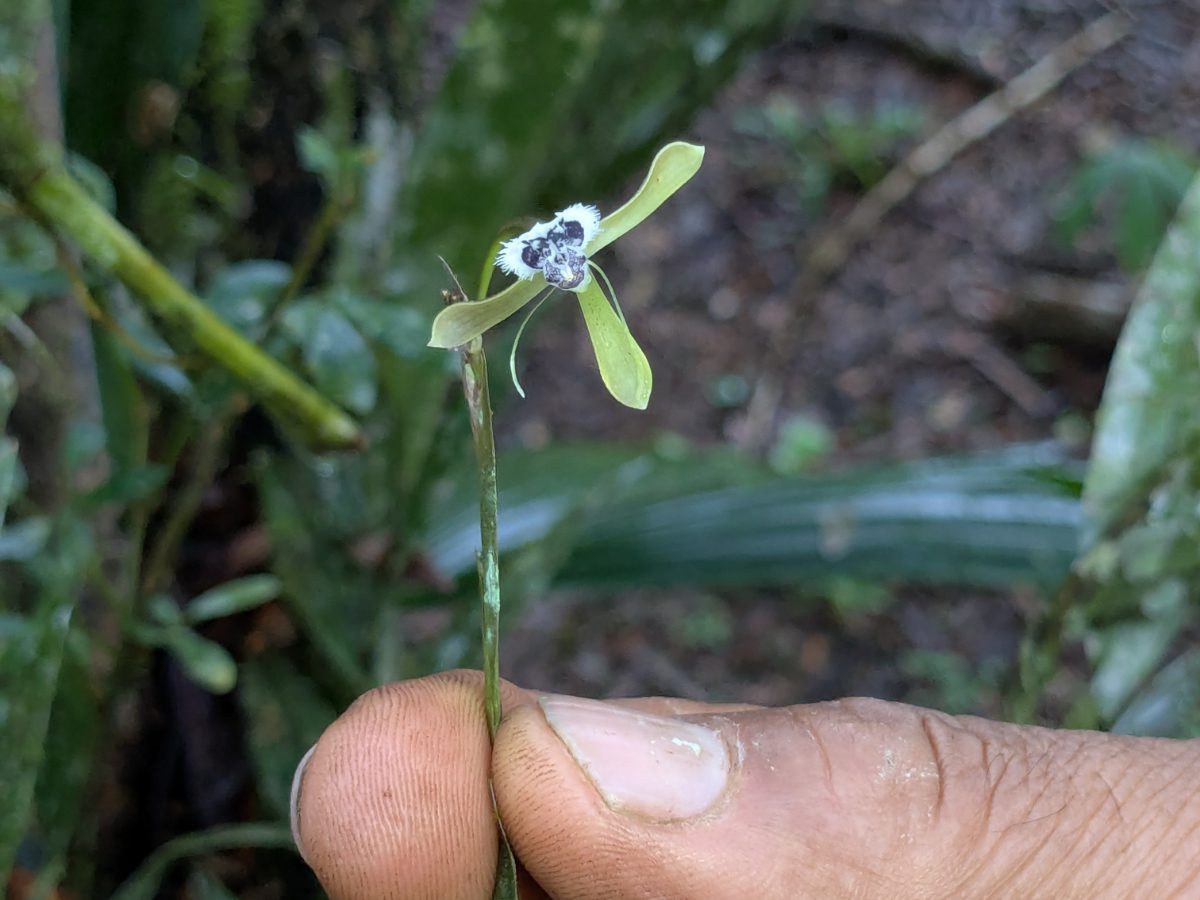
We spent over an hour walking the trails, talking with Pepe, and learning about orchids and their importance to the rainforest habitat. With more time, we could have enjoyed a meal, spent time with a local shaman, and photographed to our heart’s content. Next time, we need to stay longer.
For travelers seeking more than just snapshots, this is transformational travel at its finest—a walk through the rainforest with views looking out over the Napo River, where each step whispers a story of renewal and offers endless opportunities for connection on three levels: with ourselves, each other, and something greater than us all, Mother Nature.
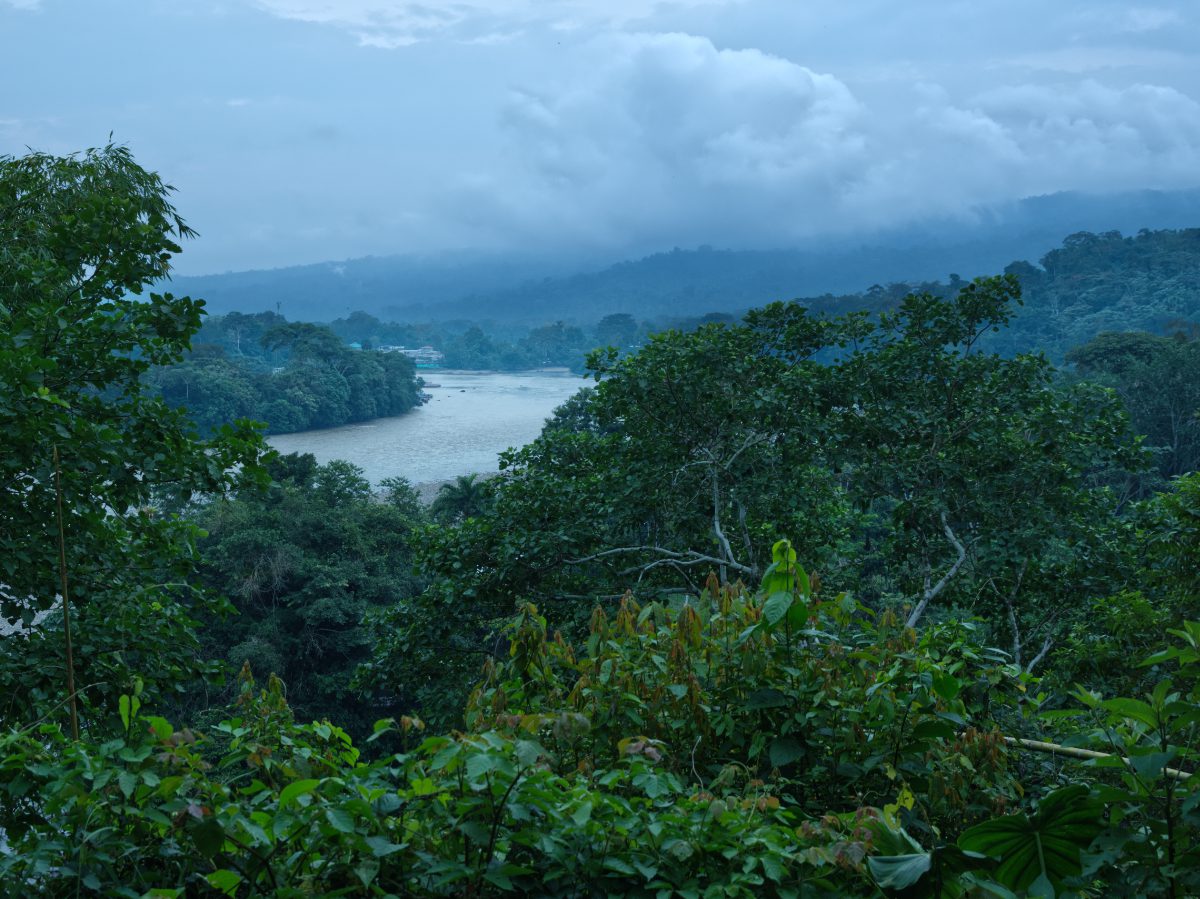
Information For Your Visit
Reservations are necessary when visiting the EcoSelva Orchid Garden. Please contact Pepe on WhatsApp at +593 984 401 938 or via Facebook or Instagram. Alternatively, book your stay at Ama Ecolodge and request a day trip. Jiovany and his staff will help organize your tour.
This location is not accessible by car. You must arrive in motor canoe which can be arranged through Pepe or in Puerto Misahaulli. Also, be aware that the steps from the river up to the property are steep and slippery, especially in wet weather. Use hiking boots or shoes with good treads, bring hiking poles if you are the least unsteady, and plan for extra time to navigate this short but challenging section.
EcoSelva Orchid Garden
Ama Ecolodge
If you’re looking for other great places to see orchids in Ecuador, check out these posts:
9 Ways Rio Quijos EcoLodge Connects You With Nature
Tucked into the lush foothills of the Ecuadorian Andes, where the mountains begin to give way to the Amazon, Rio Quijos EcoLodge is more than a place to sleep. This boutique lodge offers a chance to truly connect with nature whether along the wild Quijos River with...
Wayra Reserve: Rewilding near the Guacamayos Ridge
The Wayra Reserve, a relative newcomer among birding destinations on Ecuador's East Slope, exemplifies regenerative tourism at its best. Founders Graciela Erazo and José Vega Pérez are farmers recognized in the region for their award-winning cattle. At first glance,...
Stunning Orchids at Quito’s Botanical Garden
I look forward to orchid season in and around Quito! That means from about December through April, I'll find the best opportunities to see these strange and beautiful flowers in their native habitats. That's because rainy season brings on the prettiest blooms. In the...
El Pahuma: A Wild Orchid Reserve Near Quito
The 2.5 hour drive from Quito to Mindo, Ecuador follows a long and windy road with very few places to pull off and stop. However, one small pullout provides more than a bathroom break. El Pahuma is an orchid reserve near Quito and lies in the heart of the UNESCO...

